-
Posts
11,762 -
Joined
-
Last visited
-
Days Won
158
Content Type
Profiles
Forums
Events
Store
Downloads
Gallery
Posts posted by Bugyotsuji
-
-
Three versions? What book?
-
 1
1
-
-
Without seeing this gun in hand, it is difficult to judge. Everything looks good, possibly too good. My first impression is one of newness. The wood is so clean, and an unusually bright reddish colour. Could it be a replica, like the ones that are made in the USA, I thought?
The brasswork could be original, but looks as if it has has been cleaned back to some 'original' look. Quite possible. Is the woodwork new, or has it been stripped and recoated? This too is possible. The ramrod looks as if someone has added an ivory tip to it. Is this later, I wonder?
To the barrel now. It gives me a good feeling. Without seeing the important bits it is again hard to judge. Is there a clean pan inside with a clear vent, and can you remove the bisen breech screw? (These questions really need to be answered first.) All we can see are the decorations and the steel surface. These decorations were not important in Japan, but were usually added later for attractiveness to visiting Westerners. Whoever owned this gun before you has probably tried to brighten and clean the barrel and the inlay, without erasing the beautiful inlay work. The original lacquer coating looks to have gone. There are two or three things you can try.
If it was mine, I would clean the whole barrel inside and out in very hot water, so there is no grease on the surfaces.. The residual heat will help dry it off as you brush off the immediately-forming rust. Then I would apply Ian Bottomley's (Leeds Royal Armouries ex-Curator) *magic mixture all over, give it some time to set and semi-harden, wipe off and repeat the process until you achieve a happy medium for steel and inlay. (Personally speaking, I like the particular designs on your barrel as designs in themselves.) This coat will stop new rust from forming and 'fix' the metal surfaces, though you may not get the complete blackness back of a plain barrel.
*Boiled linseed oil, and what they call 'white spirits' in the UK. It is hard to find 'boiled linseed oil' but if you can get some, mix it with 10~20% white spirits (a turpentine-like solvent, I think). The actual percentage of white spirits to be added can vary with the job at hand.
From Wiki: White spirit (AU, UK and Ireland)[note 1] or mineral spirits (US, Canada), also known as mineral turpentine (AU/NZ), turpentine substitute, and petroleum spirits, is a petroleum-derived clear liquid used as a common organic solvent in painting.[1] There are also terms for specific kinds of white spirit, including Stoddard solvent and solvent naphtha (petroleum). White spirit is often used as a paint thinner, or as a component thereof, though paint thinner is a broader category of solvent. Odorless mineral spirits (OMS) have been refined to remove the more toxic aromatic compounds, and are recommended for applications such as oil painting.
-
Thanks so much for the information Russ. I had given up on ever finding out what it was, and while reading this thread I suddenly remembered it and thought that you might be the very man to help!

Quite topical with the Guards' horses bolting through London yesterday!
-
 1
1
-
-
-
Hang on then, I'll try and source a pic, Russ.
(Probaby the latter, though...)
-
 1
1
-
-
Some years ago I bought an iron mask at Olympia militaria. For a small horse or a large dog (?), I never did find out.
-
 1
1
-
 1
1
-
-
橙色 daidai-iro is a specifically Japanese colo(u)r originally named after a mikan-like citrus fruit. Slightly different from 'orange' in the western world, it has marked redness in it, and when the red quality increases it can be called 赤橙色 akadaidai-iro, or sekitoushoku, 'red daidai'.
Many Satsuma saya are lacquered in versions of this colo(u)r. (To me it has shades of terra cotta and salmon pink in it.)
-
 1
1
-
-
No that really is wonderful work Russ!

Ian Bottomley once showed me sets of tools, shaped anvils, armour making equipment etc., in a work room at the Leeds Royal Armouries Museum, which had originally come from the Tower of London. (Or Greenwich perhaps?)
-
 2
2
-
-
Although I both repair and make things, it is on a self-taught and very limited level.
Love watching others work, ...something about the concentration (?), and I kind of wish I had devoted my life to working artistically with my hands. I have kept a partial photographic record for my own satisfaction, though, but it's tons of photos for each object and I am not very organized. Fascinating subject.
-
 1
1
-
-
Mysteries we like, agreed.

-
 1
1
-
-
In other words, if you consider the double-bubble hole a kozuka hitsu ana, then these tsuba are not necessarily for a tachi...
-
The rust looks much older than a month in customs, as if someone had already tried to remove some of it even beforehand. I can understand why the seller might want to claim that it must have happened in transit.
No use crying over spilt milk though, and no way to prove anything. Suspicions will rot you from the inside, so just bite the bullet and move forward. Thus we grow!

(And learn for next time, hopefully...)
-
 1
1
-
 1
1
-
-
Nice collection of objects in a tsuba.
-
 1
1
-
-
The last knobbly object seems to be a bamboo muchi (whip).
-
Thanks Brian. It was the gaiso shape and colour that drew me to it originally. It's rare to find such a thing in these parts; they have usually been snapped up by Satsuma collectors.
-
-
One good thing about Japan is you can fly over, wander around and step back into this kind of atmosphere, forgetting all about the troubles in other parts of the globe.
Last weekend was another busy one, with a sword display up in the grounds of Achi Jinja on Tsurugatayama in Kurashiki. Always a pleasure to go back there as I once lived at the foot of that hill. The Jinja and surrounding walks are lovely at any time of year.
During the day on Saturday the polisher handed me back the little Nami-no-Hira tanto. One or two spots of rust were deeper than he had thought so he had been forced to use a coarser level of stone, he said.
That evening I had a message to say that the Satsuma long gun had been repaired, so sneaking out of the house I did a two-hour round trip to pick it up. The snapping lock now works again, at last, and he had managed to extract the stuck Bisen breech screw. The folding trigger turns out to be a strange affair that somehow disengages from the serpentine lock when in the folded position. I wonder if there was a further external soft cover that held it folded, protecting the exposed trigger for travelling?
Now I must create a karuka ramrod for it. Luckily someone gave me a length of red oak, (the proper stuff) which I may attempt to whittle down into a suitable shape.
-
 4
4
-
 3
3
-
-
Not quite so strange when we remember that many post-Edo English maps, texts etc., referred to Tokyo as Tokio and Kyoto as Kioto.
-
 1
1
-
-
Hmmm... at the moment I am just reading single letters, and not finding much meaning. Hoping someone will come along and tweak it further. Top right looks like a kanji, but it's very worn. What I suggested was ハ at the top left might actally be part of a kanji like 池.
It could even be a sales tag, with those red edges. (?)
-
To keep John's ball rolling.
...八号?
ハマルキY 一円半?
(Just messing around and taking no responsibility.)
-
 1
1
-
-
-
Chatting to a tsuba collector today and he said that the Kōgai Hitsu ana is not specifically for a Kōgai. As an example he mentioned tsuba with Kōgai ana on both sides. The smaller extra cutaway does not indicate such a strictly limited function, he said. No problem to pass the end of a Kozuka handle through there, he said.
-
 2
2
-
 1
1
-
-
Not forgetting of course that many of this type are in softer metals.
-
 1
1
-
-
On one Japanese site I visited there was a photo of some fragments of stone molds with this chrysanthemum design, suggesting that some tsuba of this type at least were cast.
-
 2
2
-



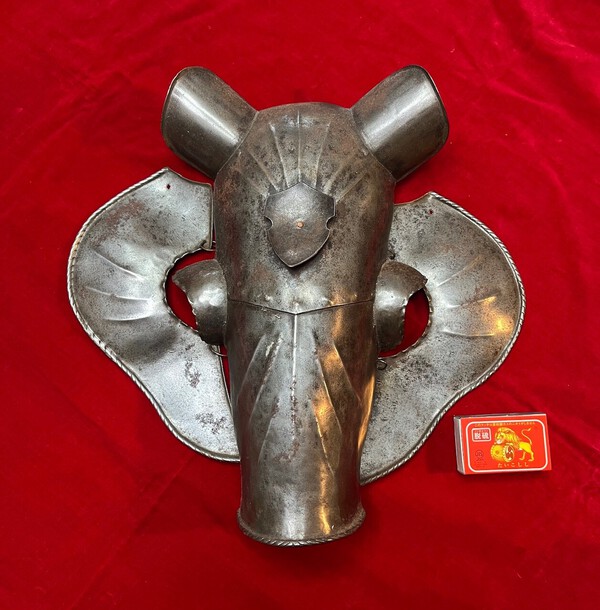
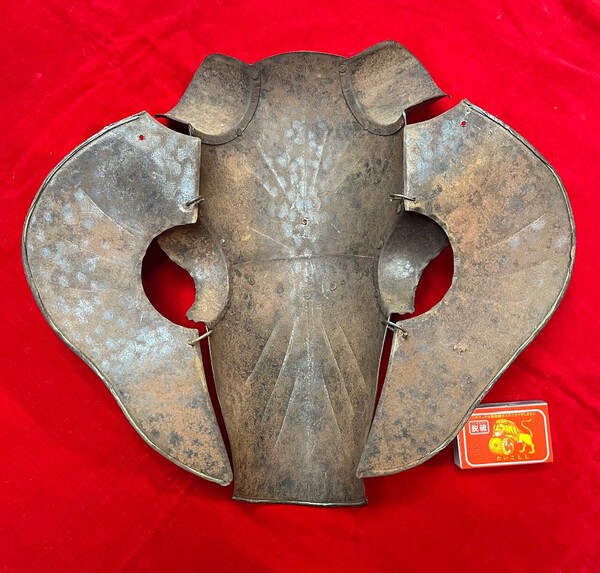
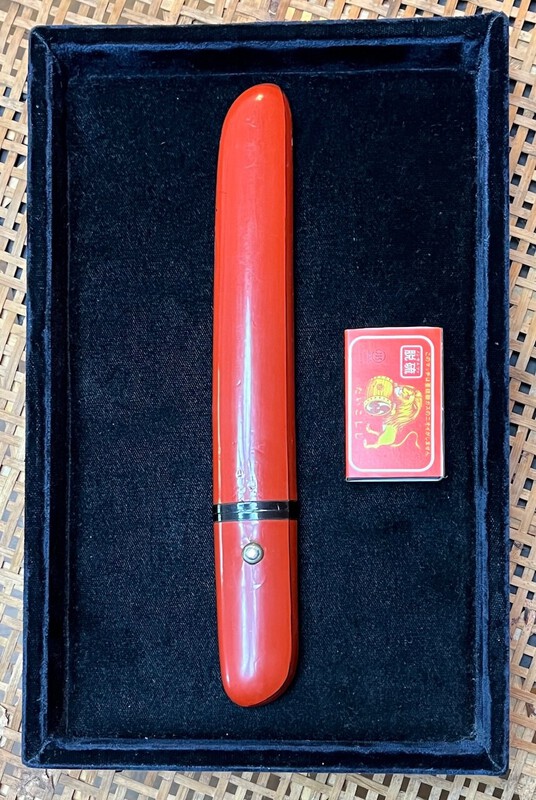
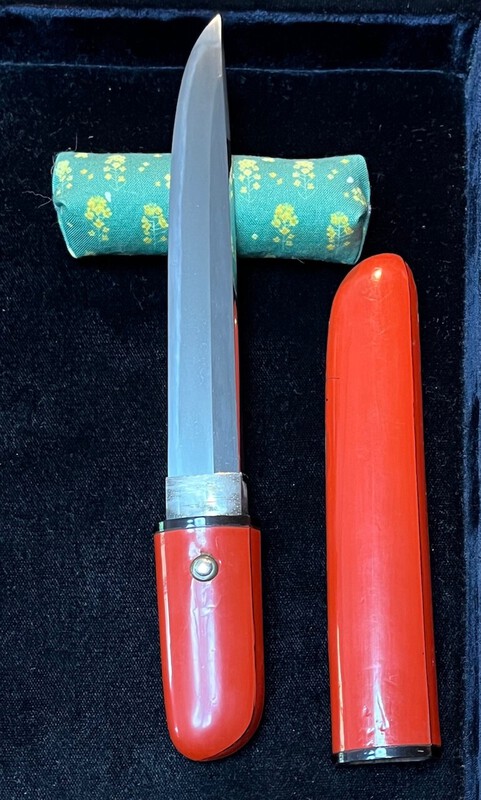
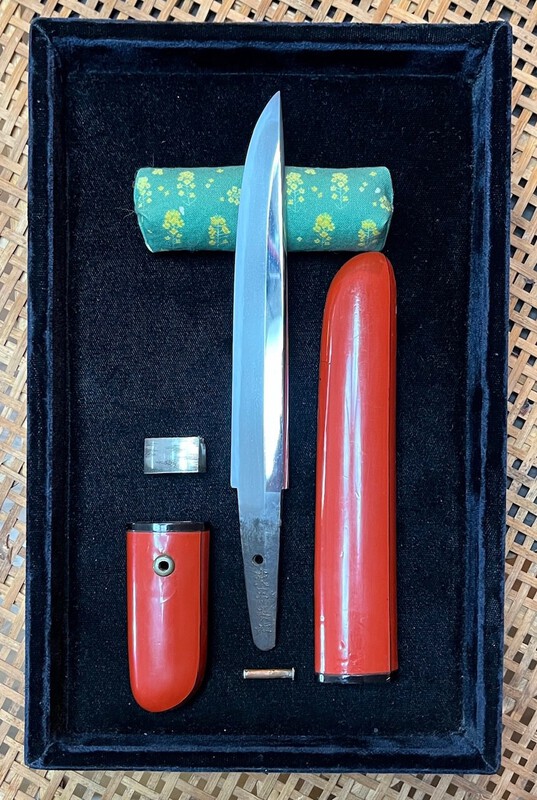
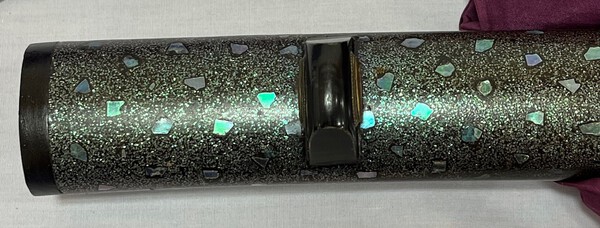
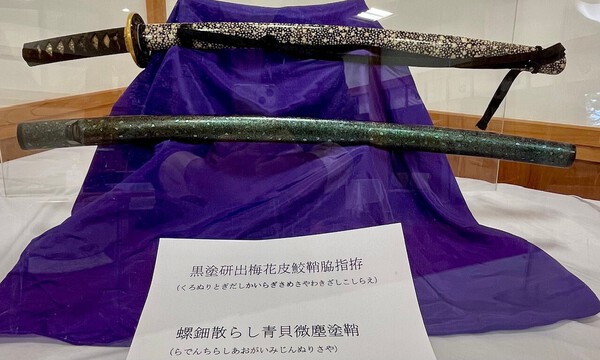
Bonhams London
in Auctions and Online Sales or Sellers
Posted
PS Just spotted the photos of your child's armour which did not appear at first on my mobile phone. Wonderful work! Is that your workshop? Seriously impressive.